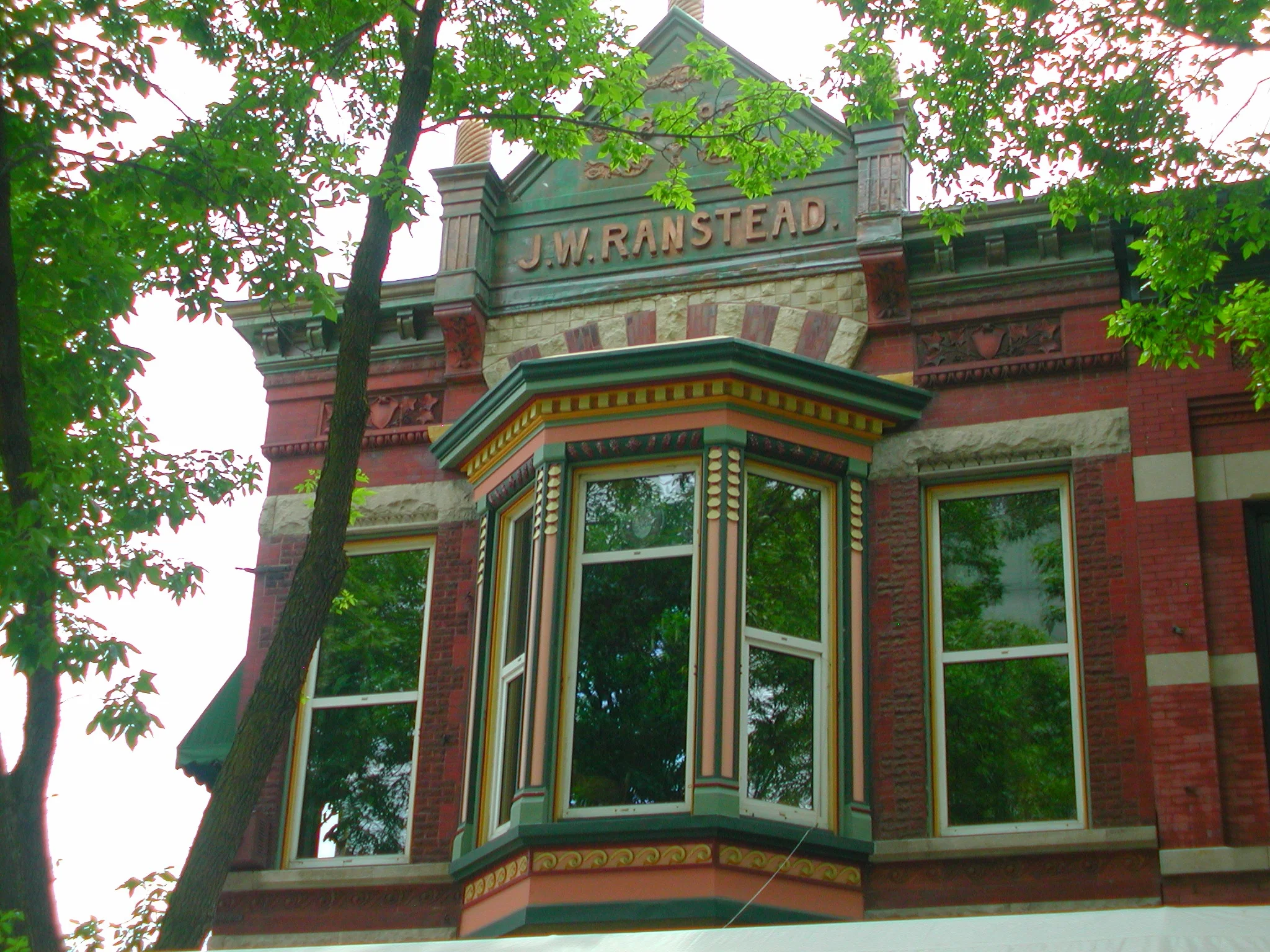RANSTEAD BUILDING
HISTORIC SIGNIFICANCE
43 DuPage Court was erected in 1892 to house the law office of John W. Ranstead. Joining him there was his son-in-law, Charles W. Lehmann. Two of Elgin's most respected attorneys, these men concentrated on loan, chancery and probate work.
John W. Ranstead was a "local" having been born at Udina, Illinois, just west of Elgin. He was well educated and graduated from the law school of the University of Michigan in 1866. He returned to his home area of Elgin to practice law and became a Judge in the Kane County court system. He was an active Democrat in a "bulwark of Republican strength," where he was held in high regard by both political parties. He retired as judge in 1882 and focused on his law practice, specializing in real estate loans. He was a member of the Universalist Church, a member of the public library board, a city water commissioner and was a Mason. His first wife, Eugenia, and he had a daughter, Janet, who married Charles Lehmann in 1899.
One of Ranstead and Lehmann's outstanding accomplishments was establishing the Home National Bank and Home Trust and Savings Bank. The two institutions evolved out of a private banking concern that existed in Elgin before the Civil War. The home National Bank focused on manufacturing and commercial endeavors; its stockholders were comprised of Elgin's elite and wealthy citizens, Judge John Ranstead was its president.
While Ranstead and Lehmann practiced law on the second floor, the first floor was occupied by one of Elgin's savings and loans. Not surprisingly, its large walk-in vault on the first floor and safe in the basement remain as proof that it was there.
The street level floor of the Ranstead Building was, from the start in 1892, occupied by various small businesses most often reflecting the times. A new concept, natural gas for commercial use, had made its debut in Elgin in the late 1880s early 1890s. The first floor was occupied by the Elgin American Gas Company in 1900. By 1905, Miss Mary Crane had established her millinery store there, large hats with flowers, feathers and fabric being in vogue. Miss Crane stayed in business for a long while and then, following the end of Wold War I, closed her shop.
ARCHITECTURAL SIGNIFICANCE
43 DuPage Street was designed by local Elgin architect, Smith Hoag and built by Siederstrom and Son. The building is an excellent surviving example of the Commercial Queen Anne style. The brick is varied in color to create design in the facade and in the sculpted chimneys. The curved design in the terra cotta strip that runs horizontally around the middle of the building continues, uninterrupted, in a different material along the bottoms of the second-story bay. Limestone and quarry face stone appear in horizontal banding, in vertical strips in the arch above the front bay and in the lintels above the doors and windows. The second-story bay and the crowning above the front bay were constructed of sheet metal, tooled with decorative detailing. Supporting the corner that extends out over the main entrance is a cast-iron column capped with detailing found on capitals of the Corinthian Order. Highly abstracted, this column supports the horizontal iron beam that extends across the front of the building and around the corner at the base of the second floor. The double door with the wrought iron grill is though to have once been a service door . The other side door originally led to the basement and the bakery that once was there.
Sources: 1999 Heritage Plaque Application; Audio: TextAloud







